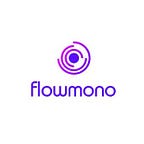Remote Onboarding 2024 Checklist
It is no news that remote work is not a trend but a necessity. With businesses increasingly embracing remote structures, the onboarding process for new clients has undergone a significant transformation. In this blog post, we’ll explore the essentials of remote onboarding in 2024, providing you with a comprehensive checklist to ensure a smooth integration of new clients into your remote setup.
Understanding the Remote Landscape:
Before going neck deep into the checklist, let’s take a moment to understand the remote landscape of 2024. By now, businesses have adapted and optimized their remote processes. Remote work is no longer a makeshift solution but a strategic advantage. With advancements in technology and communication tools, teams can collaborate seamlessly regardless of their geographical locations.
The Remote Onboarding Advantage:
Remote onboarding offers several advantages over traditional methods. It eliminates the need for physical proximity, allowing businesses to tap into a global talent pool. Moreover, it promotes flexibility and work-life balance, which employees increasingly value. However, businesses need to have a well-defined onboarding process to leverage these benefits effectively.
The Remote Onboarding 2024 Checklist:
1. Pre-Onboarding Preparation:
Preparation is key to a successful onboarding process. Before welcoming them on board, it is crucial to lay a strong foundation.
You can start by conducting a thorough assessment of your remote infrastructure to ensure it can accommodate new clients seamlessly. Then, assign dedicated onboarding specialists who will guide clients through the process and address any concerns, and set clear expectations regarding communication channels, work hours, and deliverables to avoid misunderstandings later.
2. Customize Onboarding Materials:
Now that we’ve laid the groundwork for our onboarding preparation, it’s time to get creative and personalize onboarding materials.
First things first, tailor your onboarding materials to reflect your remote work culture and values. Include information about remote tools, communication etiquette, and cybersecurity best practices. Then, provide clients with access to your digital workspace and collaboration platforms, ensuring they are familiar with the tools before they start working.
3. Virtual Meet-and-Greet:
Next on the list is virtual meetings. You can get up to speed with the team by scheduling virtual meetings with key team members to introduce clients to their new colleagues. Encourage informal conversations to foster rapport and camaraderie. Use video conferencing tools to facilitate face-to-face interactions, helping clients put faces to names and build stronger connections.
4. Training and Orientation:
This stage involves getting acquainted with tools and communication protocols. You should develop interactive training modules that cover essential aspects of your remote workflow, such as project management tools, file-sharing protocols, and remote security measures and offer ongoing support and resources to help clients navigate any challenges they may encounter during the onboarding process.
5. Establish Feedback Channels:
Create feedback loops to gather input from clients about their onboarding experience. Use surveys or one-on-one discussions to solicit feedback and identify areas for improvement. Also, actively listen to client concerns and suggestions, demonstrating your commitment to continuous improvement and client satisfaction.
6. Monitor Progress and Adjust:
Track the progress of each client’s onboarding journey and identify any bottlenecks or issues that arise. Try to be flexible and adaptive in your approach, adjusting your onboarding process based on client feedback and evolving business needs.
Remote onboarding in 2024 presents both challenges and opportunities for businesses. By following a comprehensive checklist like the one outlined above, you can ensure that your onboarding process is efficient, effective, and tailored to the unique needs of remote clients. Embrace the remote revolution and position your business for success in the digital age.
Remember, remote onboarding is not just about transferring information; it’s about building relationships and fostering a sense of belonging in a virtual environment. With the right approach and mindset, you can turn remote onboarding into a seamless and rewarding experience for both your business and your clients.
Flowmono understands how critical onboarding is and has made sure that our e-signature and document management software eases your onboarding needs. You can get started on Flowmono for free today.
